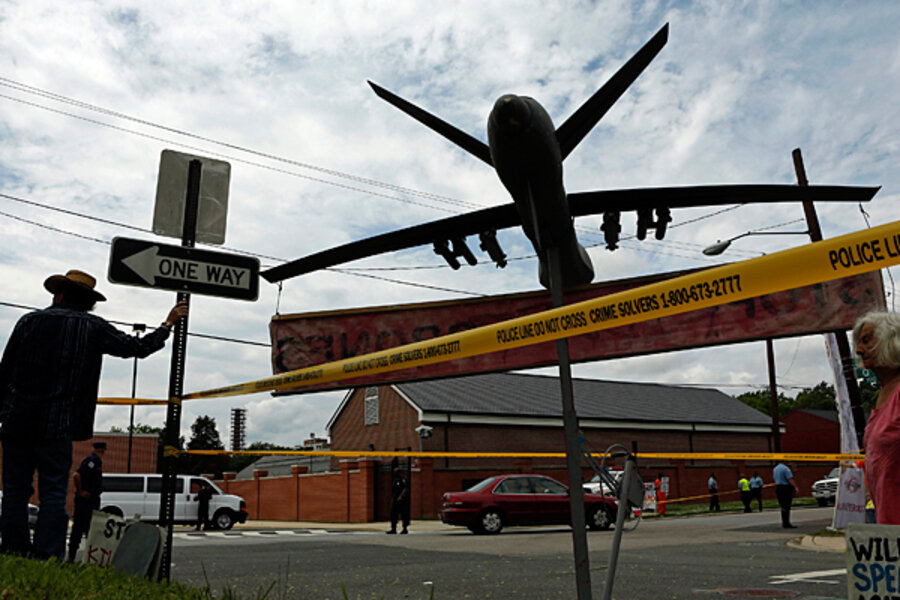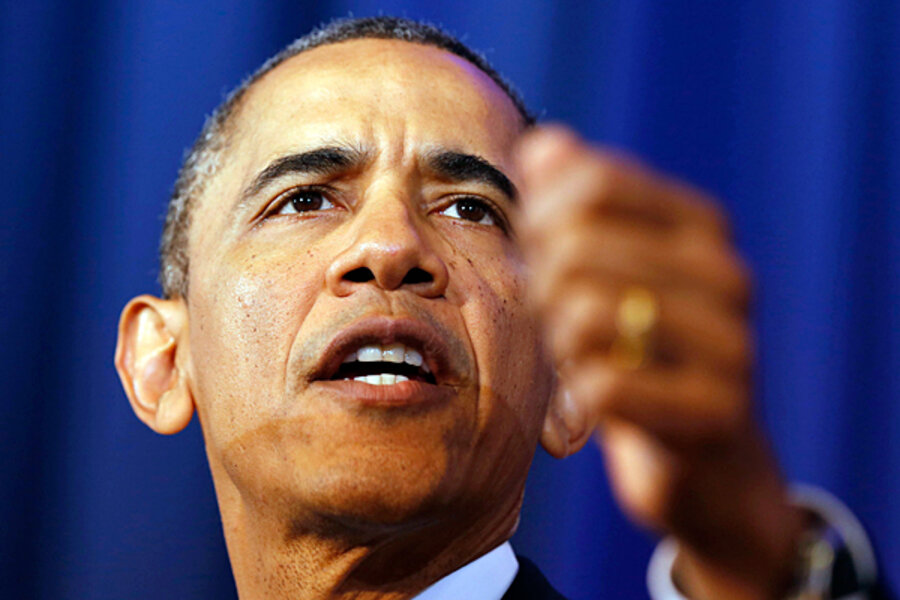Has Obama tightened US drone strike policy, or not?
Loading...
| Washington
Has President Obama made US policy on lethal drone strikes more restrictive, or not? That’s a question arising in the wake of the big speech on American security that Mr. Obama delivered Thursday at the National Defense University (NDU) in Washington.
Administration officials had said the address would contain big changes on drone attacks, which are broadly popular in the United States but highly controversial in Pakistan, Yemen, and other places where they occur. And indeed, at NDU, Obama announced that he had just signed new policy guidance on the use of lethal force against terrorists.
But, Obama added, this new policy “codified” rules that the White House has developed over four years. He didn’t say “changed” in this context. The guidance itself is classified, so the public does not know exactly what it says. And other sections of the president’s speech that referred to drones were so carefully worded as to be “opaque,” according to one expert.
“I can’t tell at this stage whether there’s really been a substantial narrowing – that is, whether there are people whom the US used to target whom it is, as a matter of new policy, no longer targeting,” writes Benjamin Wittes, Brookings Institution senior fellow in governance studies, on the Lawfare national-security blog.
At NDU, Obama began his reference to drones with a defense, saying that they were targeted and less lethal than special-force attacks – often the only way to attack enemies hidden in rugged mountains and caves.
Then the president said that the drone discussion could not end there.
“To say a military tactic is legal, or even effective, is not to say it is wise or moral in every instance,” he said.
He announced that on Wednesday, he’d signed new Presidential Policy Guidance on the subject. Then he gave an overview of what the new guidance says.
Generally speaking, the US government has to determine that a potential drone target poses a “continuing and imminent threat to the American people,” the president said.
Drones can be used only if the US can’t capture individual terrorists.
“Our preference is always to detain, interrogate, and prosecute them,” Obama said.
And finally, before any strike occurs, there must be “near certainty” that no civilians will be killed or injured, according to the president.
These points all sound reasonable, notes Slate national-security correspondent Fred Kaplan. But they were all made in a 16-page Justice Department white paper on the subject that was made public in February.
“And the way that the paper defined those terms rendered the restrictions meaningless,” Mr. Kaplan writes.
For instance, according to the white paper, “imminent threat” does not mean a specific attack that “will take place in the immediate future.” Al Qaeda, by definition, is always planning attacks against the US. Therefore, US targeting officials can assume a long time frame when judging whether a terror suspect constitutes a near and present danger.
US officials had said that Thursday's speech would say the Pentagon is assuming responsibility for most drone strikes from the Central Intelligence Agency, but it actually said nothing about that, Kaplan notes. Nor did it say anything about “signature strikes,” which are aimed at groups of people who are behaving in the manner of terrorists, not at particular individuals.
“In short, the speech heralded nothing new when it comes to drone strikes,” Kaplan writes.
The administration does appear to be trying to avoid civilian casualties. Nongovernmental estimates for the number of civilian deaths in drone strikes this year range from zero to 11, Kaplan notes.
At Lawfare, Mr. Wittes writes that “the number of drone strikes in Pakistan has fallen sharply.” But he takes that to be the result of pressure from the Pakistani government as much as anything else.
Obama’s language, Wittes notes, matches up pretty closely with other references to drones made by administration officials in the past – such as the speech by former White House counterterrorism adviser and current CIA chief John Brennan at the Wilson Center in April 2012.
Overall, “this question strikes me as an area ripe for additional clarification from the administration,” Wittes writes.







